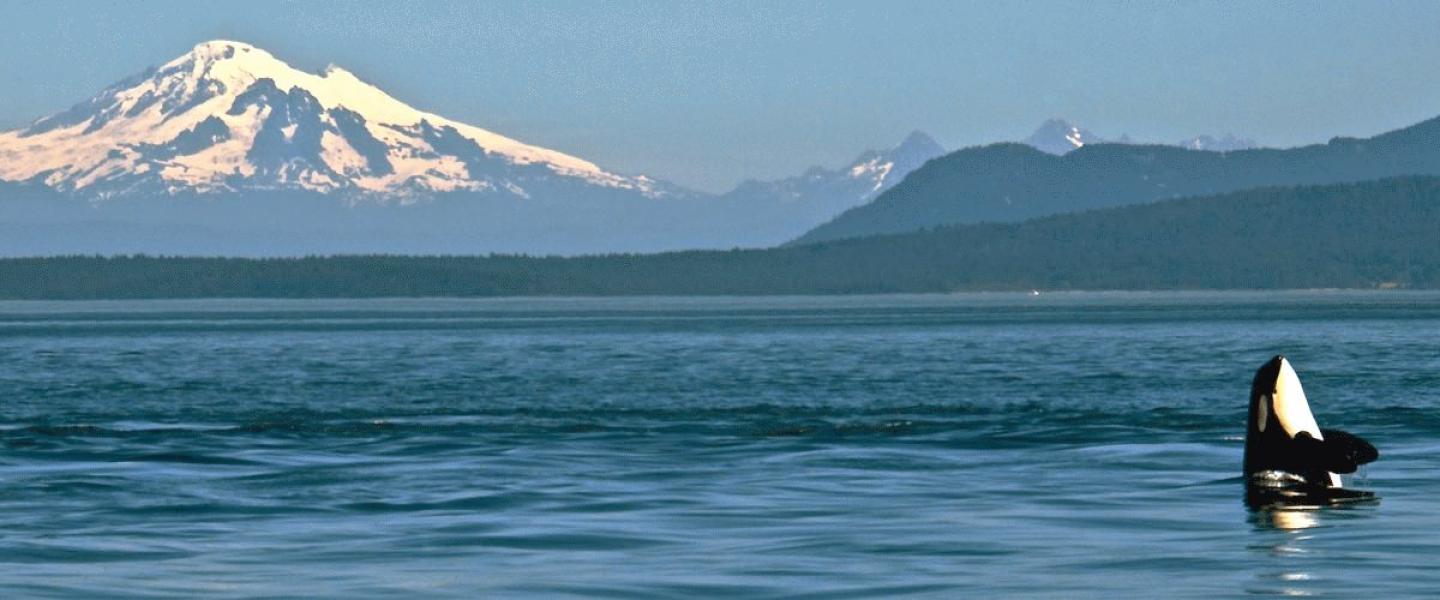
Many of the islands in the San Juans were named for the Spanish explorers who first recorded coming across them. Like those explorers, we felt gratified in circumnavigating our 15 by ten mile island that we call home. We left Friday Harbor and headed south. The water was smooth like a mirror and our new naturalist Casey looked for wildlife while I entertained our guests with facts about the islands. Soon we came across rocks covered in harbor seals about to burst. Pupping season is on its way! Harbor sea's bodies share a trait with marsupials and bears called delayed implantation. Harbor seals mate while they're still nursing their young. The fertilized egg floats around in the uterus for three months before attaching to the uterine wall to start gestation. Harbor seals only stay with their pups for about 6 weeks, so delayed implantation gives them time to wean their pups and allows their body time to recover before gestation begins again. When pupping season starts our local wildlife rehabilitation center is inundated with pups. Often people see a pup alone on a beach and call the rescue center because they believe its abandoned. Such is not the case however. Harbor seals leave their pups on rocky shorelines while they forage. Our resident harbor seal Popeye has been known to leave her pups on boat's swim platforms in the harbor.
Today was a great day for Rhinoceros Auklets. Rhinos are the little black birds with white tufts protruding from their beaks like tusks. They're diving birds, seeking fish, swimming instead of flying with their wings. In the San Juans Rhinoceros Auklets nest on Smith and Protection Islands, both wildlife refuges. They burrow 15 feet into the crumbly glacial till so their nests are protected from hungry predators. This also allows them time to flit about during the day only visiting their nests at night.
Many of our islands are national wildlife refuges in and of themselves. Much of the land on the inhabited islands is conserved by the Land Bank and the Nature Conservancy. Turtleback Mountain, on Orcas Island, was being looked at for a major residential development. Turtleback Mountain looks like a Sperm Whale from one angle and a turtle from another. The Nature Conservancy purchased it in 1979 to keep it pristine. I'm not anti development but I am for conservation. I understand that to survive we must use natural resources. I also know that the reason I choose to live here is because of the natural splendor. Many cities have bumper stickers that say, 'Keep Austin weird,' or 'Keep Portland weird.' I would like one that says, 'Keep the San Juans pristine.' And maybe that will catch on.
Lauren Sands, Naturalist